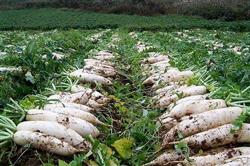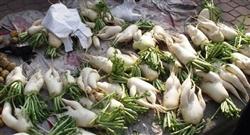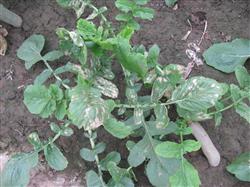Radish planting: how to improve the quality of autumn radish?

How to improve the quality of autumn radish? Please guide if you want to improve the quality of autumn radish, you can refer to the following methods: 1. Select excellent varieties. For example, the varieties with shallow fleshy roots are not easy to have abnormal roots; the varieties with less water content in radish fleshy roots and the varieties with dense fleshy roots are not easy to crack roots; the white-skinned varieties or hybrids with faster growth rate are less spicy and bitter than the green-skinned varieties, so they are suitable for cultivation in summer and autumn. At the same time, pure varieties, large seeds, full and full seeds should be selected, and the purity and purity should reach more than 95%. 2. Choose the suitable cultivation season. If the radish varieties eaten raw are sown late in autumn, the mustard oil content is low and the quality is good. 3. Choose the soil with deep soil layer. The soil requires fine ploughing, ploughing 18cm to 20cm, raking fine after ploughing, and deep ploughing is one of the key measures for high yield of radish. Every 667 square meters, 2000-3000 kg of rotten high-quality farm manure and 30 kg of ternary compound fertilizer are applied. 4. Water properly to avoid sudden dryness and humidity. Radish has different requirements for water in different growth stages, and sufficient water is required in the germination stage to promote rapid germination and neat emergence. In the seedling stage, we should grasp the principle of "less watering and frequent watering". In the period before the belly breaking period, we should water less and squat seedlings in order to inhibit the growth of lateral roots and promote taproots to go deep into the soil layer. During the period of fleshy root expansion, the amount of irrigation should be increased to keep the soil balanced and sufficient water. 5. Pest control. The main pests of radish are aphids, cabbage insects, yellow striped beetles, and diseases such as black rot, virus, soft rot, black spot, etc., which can be controlled by common pesticides. Click for more radish planting techniques click to get more vegetable planting techniques
- Prev

Radish planting: why does radish have a deformed black heart?
Why does radish have a deformed black heart? Please introduce the causes of radish malformed root, split root, black skin, black heart or bran heart, bitter taste, spicy taste, caused by the following factors: 1. Malformed root. Rain Water is large, irrigated too much, the soil is hardened; unrotten organic fertilizer or uneven fertilization; the soil tillage layer is too shallow, or hard under the roots.
- Next

Radish planting: what diseases does white radish have?
What diseases does white radish have? Please introduce and control the common diseases of white radish for reference: 1. Downy mildew: radish downy mildew mainly harms leaves. The onset of the disease begins with the outer leaf, with light green to light yellow spots on the leaf surface, yellowish brown after expansion, and polygonal due to the limitation of leaf veins. Tide.
Related
- Where is it suitable to grow horseradish in China? it is expected to see the middle altitude horseradish in Alishan.
- How to prevent tomato virus disease reasonably? (Control methods included)
- Many people like to plant towel gourd on the balcony. What are the main points of this method and management?
- What crops can chili peppers be mixed with?
- Fertilization techniques and matters needing attention in Tomato
- What are the grafting techniques for peach seedlings in spring?
- Harm and control methods of root swelling disease of Chinese cabbage
- What are the pests of sweet potatoes? How to prevent and cure it?
- Symptoms, causes and Control methods of navel Rot in Tomato
- The cause of "Cucumber rotten bibcock" in Farmers' planting Cucumber and its Control Plan

